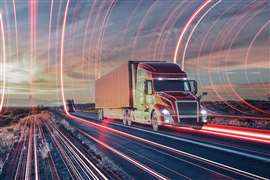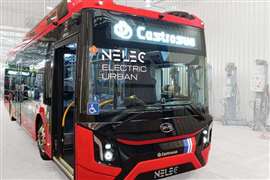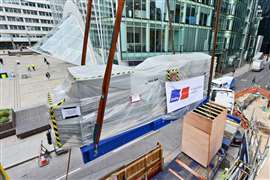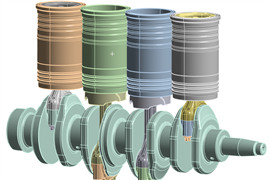Read this article in 中文 Français Deutsch Italiano Português Español
State of on-highway electrification: Supplier communication & collaboration
15 May 2024
Industry suppliers can hold the key to successful electrification
(Editor’s Note: In this second part of a series on the State of On-highway Electrification, we look at the market for commercial electric vehicles and where it’s heading.)
The move to electrification isn’t an easy transition for many commercial vehicle OEMs. Key suppliers can help.
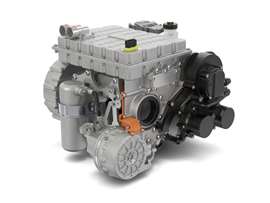 Schaeffler 4-in-1 electric axle. (Photo: Schaeffler)
Schaeffler 4-in-1 electric axle. (Photo: Schaeffler)
“For system suppliers like us, the one advantage that we have is we are uniquely positioned to work with an OEM to evaluate the overall system,” said Thomas Heck, key account manager for heavy-duty customers in the Regions Americas at Schaeffler. “It’s not just one piece of technology that we’re selling to them. We’re saying, ‘Hey, if you look at the truck as the overall system, there are certain areas and certain technologies that we can offer, or that we can help you optimize, to come away with a solution that really makes sense for the overall vehicle.’”
Constant, regular communication between the various stakeholders is critical to the process, said Shaun Twomey, global market & sales lead for ZF’s Commercial Vehicle Solutions division. “When it comes to ZF supporting an OEM, even if we weren’t talking about electrification and we were talking about a diesel powertrain, bringing that OEM’s truck to market on time, on cost with all of the complexity that’s involved, is no easy feat,” he noted. “One of the best ways to navigate that is with lockstep alignment and communication.
“When we talk about electrification and what we’re doing with our partners, yes, the conversations are different now and, in some cases, they’re happening sooner because this is in many ways new territory for everybody. That necessitates more in-depth discussion, understanding how the systems and components and the architecture come together in this new electrified way. But the conversations and the relationships are still really critical.”
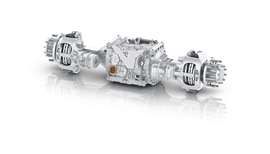 ZF AxTrax 2 electric axle. (Photo: ZF Group)
ZF AxTrax 2 electric axle. (Photo: ZF Group)
No one solution fits all
“It’s not really our position to tell customers, to tell the market, what they want. It’s the opposite. They inform us and we respond accordingly,” Twomey commented. “For that reason, we do have a variety of electrified options that we’re sharing with our customers and that are good for both production and even retrofit applications. Our ePowertrain platform really facilitates deployment of electrification options with BEVs, fuel cells and hybrids.”
ZF also offers combustion-based technologies for e-fuels, hydrogen, CNG, LPG and other gaseous fuels. “We want to give customers flexibility. We want to give them the ability… to say, ‘You know what, maybe I’m not quite ready to go full bore into buying an electrified powertrain, but I want to take steps in that direction – maybe with a hybrid or with an alternative fuel. Maybe I want to retrofit my existing fleet before I buy a brand-new fleet.’
“ZF and other Tier 1s, have a responsibility to make this transition as easy for customers’ fleets as we can.”
A shift in approach
For some, that can mean making a substantial shift in approach to market. For example, Danfoss has developed an onboard charger for commercial vehicles that charges at 43 kW with AC power plus functions as an e-PTO.
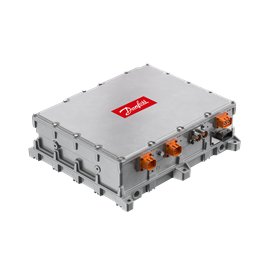 Danfoss Editron ED3 onboard charger with electric power take-off functionality. (Photo: Danfoss Editron)
Danfoss Editron ED3 onboard charger with electric power take-off functionality. (Photo: Danfoss Editron)
“The body builder can connect an auxiliary on it and control, let’s say, the compactor of a refuse truck or the air compressor of a refrigerated truck,” said Eric Azeroual, vice president of On Highway for Danfoss Editron. “So, we have that dual functionality.”
This and other product offerings are taking Danfoss into new territory. “OEMs now are posed with a big problem of transforming their plants from making engines to making batteries and electric motors and things like that. So, Danfoss is basically transforming itself, as well,” said Azeroual.
“Whereas we were typically a Tier 2 supplier supplying Tier 1s, we are now a Tier 1 supplier ourselves because the OEMs are [building] their own subsystems, their own e-axle, their own components into the vehicle because they have to repurpose their workforce. They have to understand how to build an efficient electric truck to be able to be cost competitive.
“So, that is really a change for Danfoss. And it’s exciting for us to be part of that.”
POWER SOURCING GUIDE
The trusted reference and buyer’s guide for 83 years
The original “desktop search engine,” guiding nearly 10,000 users in more than 90 countries it is the primary reference for specifications and details on all the components that go into engine systems.
Visit Now
STAY CONNECTED




Receive the information you need when you need it through our world-leading magazines, newsletters and daily briefings.
CONNECT WITH THE TEAM










